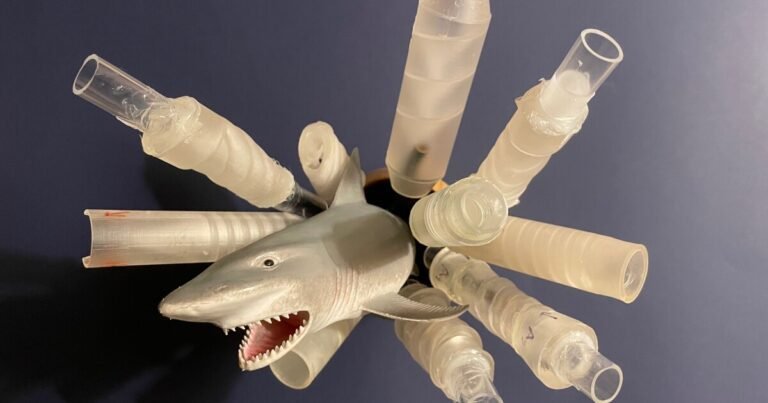Typically, if you want a liquid to flow through a pipe in only one direction, that pipe needs to be fitted with a flap-type valve, which can fail. But now scientists have taken inspiration from shark guts and developed a new type of one-way flow pipe that may be stronger.
While the human intestine is basically just a bunch of hollow tubes, the lower part of a shark’s intestine incorporates a structure called a spiral valve: a relatively short, straight section of intestine that has a spiral (like a corkscrew) structure inside.
As liquefied food spirals through this structure, it slows down its passage through the digestive tract and the valves in the intestinal wall allow maximum absorption of nutrients from the food. This is necessary because shark intestines are much shorter than human intestines.
Three years ago, a team of American scientists proposed that the spiral valve also prevents reflux in the shark’s intestinal tract, because once food is inside, it can’t go back out. What’s more, the researchers pointed out that this is possible despite the presence of valves that have to snap shut.
Inspired by this work, University of Washington postdoctoral researcher Ido Levin and his colleagues set out to replicate the one-way function of the spiral valve in 3D-printed rigid pipes, all with a narrow opening in the middle surrounded by a helical structure that forces any liquid passing through the pipe to swirl forward.

Ido Levin/University of Washington
The scientists printed several different prototype pipes, experimenting with geometric parameters such as the pitch angle of the helix and the number of turns, until they finally created a pipe that promoted one-way liquid flow even better than the Tesla valve, a one-way flow device with no moving parts invented by Nikola Tesla.
But given the fact that shark spiral valves are not stiff, the scientists built further prototypes out of the softest commercially available 3D printable polymers. These performed much better, at least seven times better than the Tesla valve. That said, shark intestinal tissue is 100 times softer than polymers, so the researchers say there is still room for improvement.

Sarah L. Keller/University of Washington
“Chemists were already motivated to develop polymers that are soft, strong, and printable,” said Professor Alshakim Nelson, co-author of the study with Professor Sarah Keller and postdoctoral researcher Naroa Sadaba. “The possibility that these polymers could be used to control flow in a wide range of applications, from engineering to medicine, adds to that enthusiasm.”
A paper on this research was recently published in the Proceedings of the National Academy of Sciences.
Source: University of Washington


